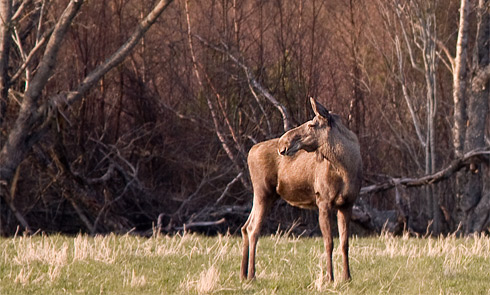As a part of my doctoral degree, I study the interaction between large herbivores like moose and deer, and the forests they live in.
Moose and deer populations have increased drastically in Norway the last decades resulting in a high browsing pressure that is having an effect on forest tree regeneration.
This affects the functioning of forests in terms of timber production, but may also influence other important aspects such as biodiversity, soil fertility, and carbon storage.

Inside and outside the fence
To study some of the complicated interactions between large herbivores, vegetation, and climate, I compare field measurements made inside and outside large exclosure fences that have been erected on recent logging sites.
By using long-term ecological data collected in several different forest types with known herbivore densities, we hope to be able to explain the observed differences in forest development.
Moose and deer population sizes
Learning about the effects of large herbivores on the forest vegetation will help us identify appropriate moose and deer population sizes to ensure sustainable management of our natural resources, as well as identifying potential conflict between management goals, such as forestry and biological conservation.
